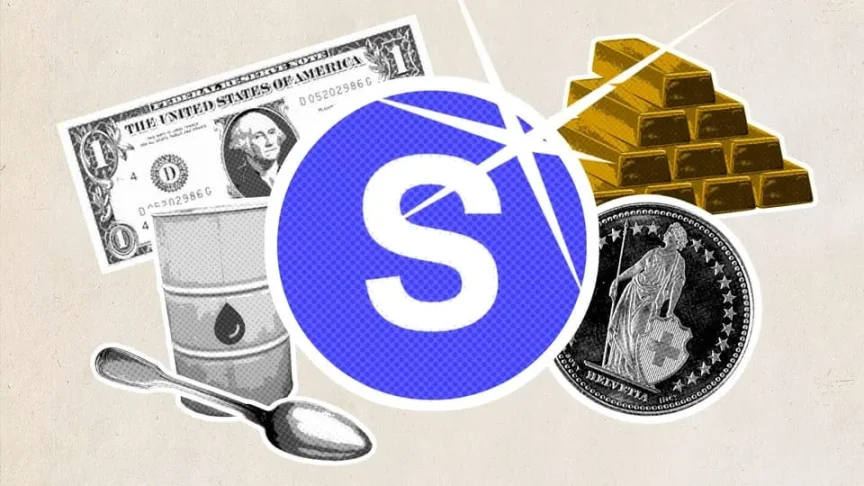The bill aims to regulate payment stablecoins, establish a new compliance mechanism, expand regulatory powers, and clarify key definitions related to the issuance and use of dollar-backed digital assets.
Source: cryptoslate
Translation: Blockchain Knight
On March 26, the U.S. House of Representatives introduced a revised version of the Stablecoin Transparency and Accountability Promotion Act (STABLE Act), significantly amending the draft from February 5.
The bill aims to regulate payment stablecoins, establish a new compliance mechanism, expand regulatory powers, and clarify key definitions related to the issuance and use of dollar-backed digital assets.
The 2025 STABLE Act was formally introduced by Republican Representatives Bryan Steil of Wisconsin and French Hill of Arkansas, aiming to build a federal framework for the issuance of payment stablecoins.
Additionally, the bill categorizes qualified issuing entities into three types: federal regulatory agencies, non-bank entities approved by the Office of the Comptroller of the Currency, and state-licensed entities operating under a certification system.
New Provisions and Structural Changes
Compared to the initial draft from early February, the revised version on March 26 introduced several substantive changes.

The updated bill explicitly excludes various financial products, such as securities, deposits, and credit union accounts, from the definition of "payment stablecoins." This exclusion provides developers and institutions with a clearer legal understanding of the qualified scope defined by the bill.
The new draft requires verification of monthly reserve proof by registered public accounting firms and mandates that the CEO and CFO certify the accuracy of these reports.
Deliberately submitting false certifications may face criminal penalties of up to $1 million in fines or 10 years in prison. These certification provisions were absent in the February version.
Further updates include detailed procedures for reviewing and approving new stablecoin issuers. The revised draft sets decision deadlines for federal regulatory agencies, provides formal appeal rights, and allows applicants to reapply after being denied.
Regulatory agencies must also submit annual reports to Congress regarding the processing times of pending applications.
Republican Representative Bill Huizenga of Michigan, a primary co-sponsor of the bill, emphasized its importance on the X platform. He stated:
"Stablecoins have the potential to simplify our payment systems and fundamentally change the way we transfer funds. I am proud to be a primary co-sponsor of these two bills alongside Representatives Bryan Steil and French Hill, and I look forward to the revisions being discussed next week."
Rulemaking and Industry Coordination
A key new element is the requirement for regulatory agencies to initiate rulemaking procedures within 180 days of the bill's enactment to clarify application requirements and streamline the approval process for capital-sufficient entities.
The bill also provides clear protections for issuers using public, decentralized networks, clarifying that this design choice should not be a reason for denial, which is an important safeguard for developers working on blockchain-based infrastructure.
Both the February and March versions aimed to exclude payment stablecoins from the classification of securities. However, the new version more comprehensively amends relevant regulations under the Investment Advisers Act, Securities Act, Exchange Act, and Securities Investor Protection Act to ensure consistent treatment in financial regulation.

The updated STABLE Act integrates the treatment of decentralized stablecoins and non-payment stablecoins into a single research provision and restructured its approach to international interoperability.
According to the revised Article 10, the Treasury will coordinate with foreign jurisdictions to assess comparability and support the use of cross-border stablecoins, replacing the independent counterpart provisions in the earlier draft.
Additional Provisions
The March 26 bill imposes strict reserve standards on stablecoin issuers, requiring full backing by cash-equivalent assets (such as Treasury bills or demand deposits).
It also prohibits issuers from paying yields to token holders and restricts the issuer's activities to core functions such as issuance, redemption, and custodial services.
To protect consumers, the bill includes provisions that explicitly state the U.S. government does not provide insurance for stablecoins and prohibits any false statements to the contrary. Violations may trigger civil penalties or criminal prosecution under existing federal laws.
The March 26 revisions indicate a bipartisan consensus in Congress on formalizing stablecoin regulation and adapting financial policy to blockchain-native payment systems.
Additionally, it reflects a stronger response to the needs of developers and institutions operating at the intersection of fintech and traditional banking.
The U.S. House Financial Services Committee is expected to review the bill in the coming days. During the review, committee members will examine various viewpoints and discuss amendments.
免责声明:本文章仅代表作者个人观点,不代表本平台的立场和观点。本文章仅供信息分享,不构成对任何人的任何投资建议。用户与作者之间的任何争议,与本平台无关。如网页中刊载的文章或图片涉及侵权,请提供相关的权利证明和身份证明发送邮件到support@aicoin.com,本平台相关工作人员将会进行核查。




